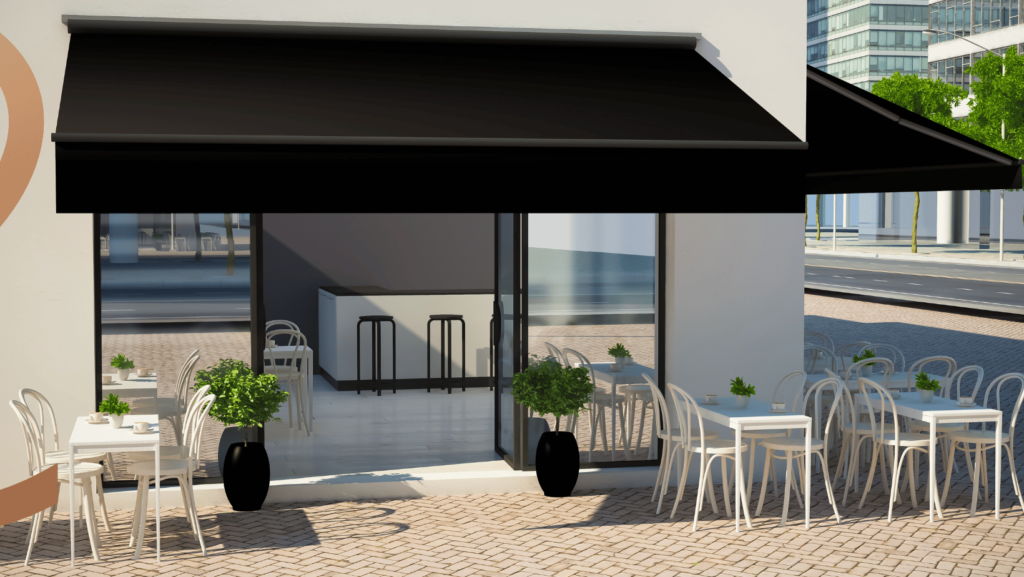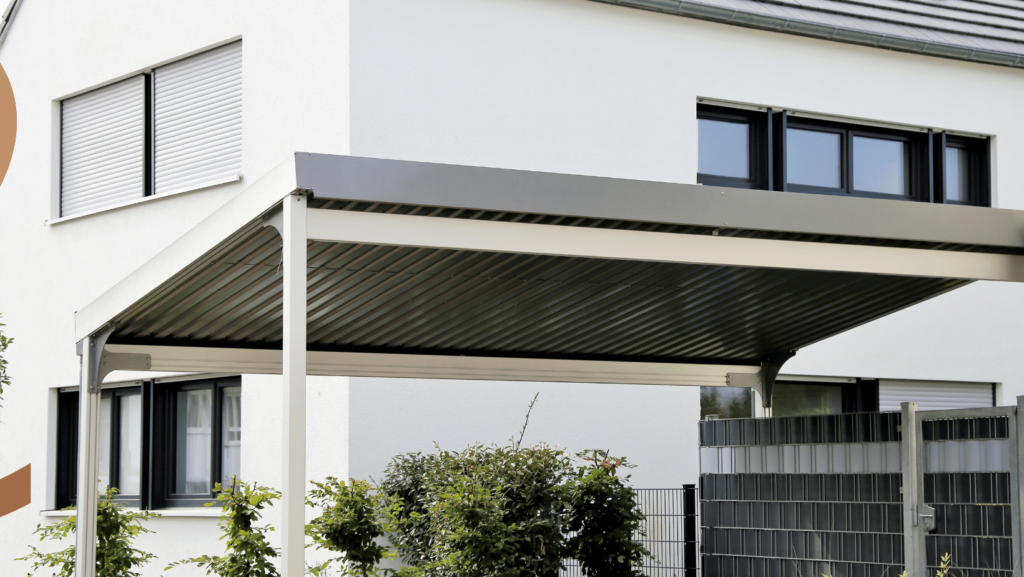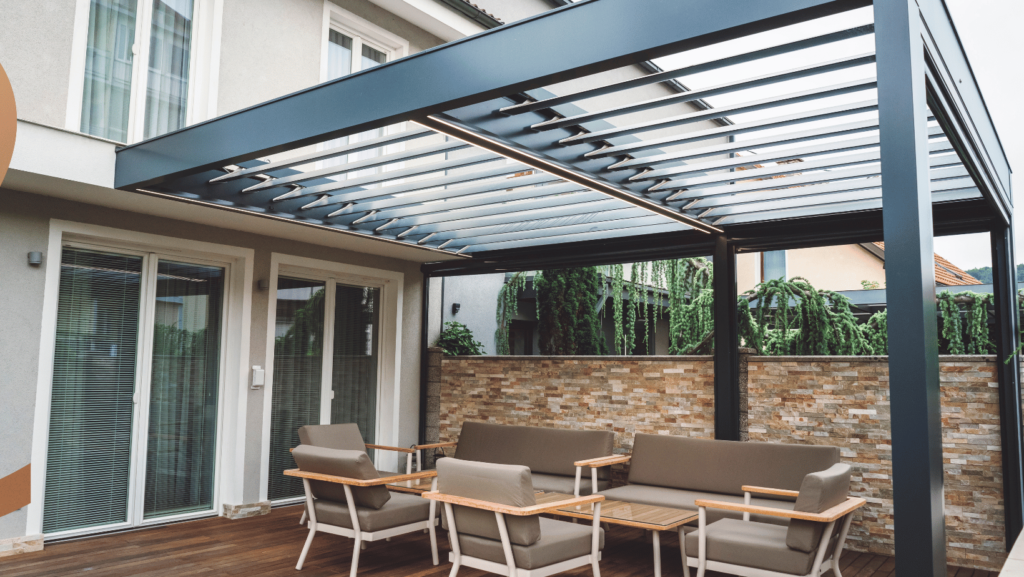The following are some of the outdoor shelter solutions that are available for homes and businesses that would help them protect themselves and their assets from natural events. There are three primary choices when building a shade structure: the awning, the canopy, and the pergola. All of them have their strengths and applications varying from the others based on specific criteria such as cost, durability, appearance, and possibilities for personalization. In this article, the author aims to understand the most significant distinctions of the three most commonly used outdoor constructions.
What is an Awning?
Awnings are movable sheltered constructions that are positioned over a window, door, or patio and are part of the external façade of a building. It consists of fabric material and in some types have a metal body with aluminum structure.

Key features:
– construct shelter from sun and light rain
– They are generally less costly, or if not, they are affordable.
– Provide flexibility – they can be pulled aside or stowed when not in use
– Sizing: To cater to the different customer sizes, the company should ensure that it has a variety of sizes for the pants that it is selling to the consumers. Colors and patterns: The company should ensure that it offers different colors and patterns, as this will help to meet the requirement of all its customers.
– Buildings made of temporal materials, not permanent.
Best Uses for Awnings:
Awnings are pretty suitable for shading windows, patios, decks, doors, walkways and restaurants among others. This is because the awning can be opened to allow light into the building or closed to block the sun depending on what is inside the building. They are, therefore, suitable for home and business use since the space is temporary and flexibility is required.
What is a Canopy?
It has poles and has roofed structure, it does not have side walls that are also enclosed by other structures. They are somewhat related to awnings in a way that they provide some sort of cover, but they are larger in size.

Key features:
– Contribute to shading of larger spaces that are outside the building.
– Some are mounted on poles or legs for robust frame support
– The cartesian system is possibly operable with curtains.
– Waterproof roofing material
– Semi-portable – not permanently fixed, but they can be easily removed or dismantled.
Best Uses for Canopies:
Canopies are perfect for industries and shops with outdoor playgrounds, patios, backyards, parks, and markets, fuel stations, driveways, and boats. The waterproof roof provides good shade and rain, as well as visibility due to the openness of the structure.
What is a Pergola?
Pergolas are structures made of horizontal and vertical members that can be interwoven to form a roof-like structure in the garden. They are more permanent fixtures explicitly used for the purpose of beautifying these landscapes.

Key features:
– Very commonly, it is an area that has post and beam architecture in the aesthetic style.
– It must allow filtered shade with plenty of air circulation.
– It is most commonly built of wood or plastic material called vinyl.
– Sometimes grow climbing plants to have a natural roof or cover above the structure.
– Structures that are easier to build and take long to construct as compared to the structures that are quickly erected.
Best Uses for Pergolas:
Pergolas serve as an enhancement to gardens, yards, pools, restaurants, hotel courtyards, pathways, and any area that necessitates the requirement of a greenery feel. These structures also have a beautiful design and are pretty permanent in their form, which makes them perfect for the beautification of outdoor spaces.
Conclusion
In conclusion, awnings are often the most versatile and economical covers, while the pergolas provide elegance, durability, and the sense of being halfway between an uncovered structure and a fully shaded one. Canopies offer the broadest coverage of the various categories of shelters. It boils down to what the area requires, what the money can allow for, and the general appearance one would want. If these significant differences are taken into consideration, then it is easier for homeowners and business owners to get the best out of outdoor solutions.